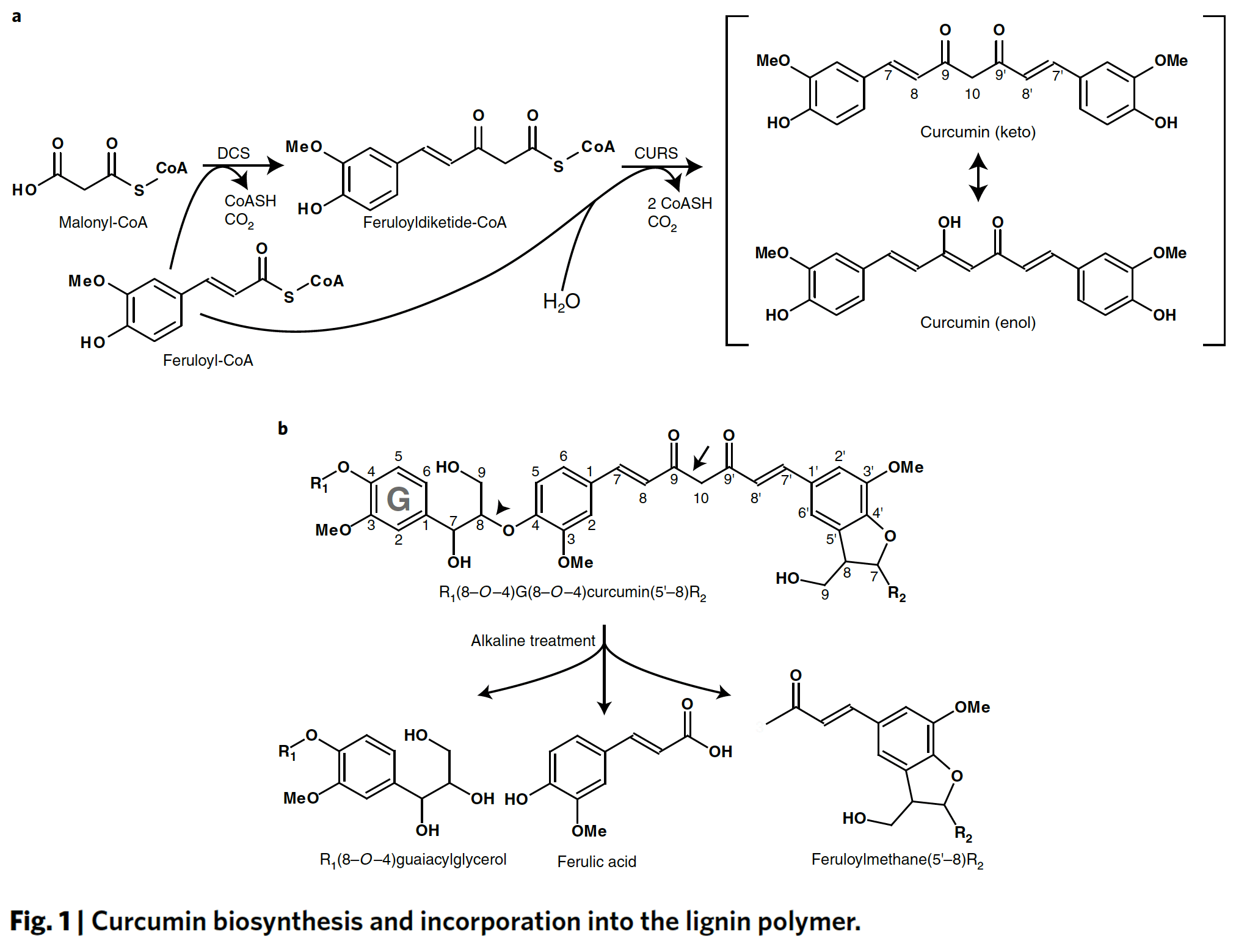博文
Nature Plants:提高植物木质素处理效率
||
Introducing curcumin biosynthesis in Arabidopsis enhances lignocellulosic biomass processing
First author: Paula Oyarce; Affiliations: Ghent University (根特大学): Ghent, Belgium
Corresponding author: Wout Boerjan
Lignin is the main cause of lignocellulosic biomass recalcitrance to industrial enzymatic hydrolysis. By partially replacing the traditional lignin monomers by alternative ones, lignin extractability can be enhanced. To design a lignin that is easier to degrade under alkaline conditions, curcumin (diferuloylmethane) was produced in the model plant Arabidopsis thaliana via simultaneous expression of the turmeric (Curcuma longa) genes DIKETIDE-CoA SYNTHASE (DCS) and CURCUMIN SYNTHASE 2 (CURS2). The transgenic plants produced a plethora of curcumin- and phenylpentanoid-derived compounds with no negative impact on growth. Catalytic hydrogenolysis gave evidence that both curcumin and phenylpentanoids were incorporated into the lignifying cell wall, thereby significantly increasing saccharification efficiency after alkaline pretreatment of the transgenic lines by 14–24% as compared with the wild type. These results demonstrate that non-native monomers can be synthesized and incorporated into the lignin polymer in plants to enhance their biomass processing efficiency.
木质素是木质纤维素生物量对抗工业酶水解的主要抗力。通过人为替换部分的木质素单体,可以增强木质素的可获取性。为了设计出一种在碱性条件下更加容易降解的木质素,作者通过在模式植物拟南芥中同时表达姜黄的基因DCS和CURS2来合成姜黄素。在转基因植物中会产生过多的源自姜黄素及苯基戊烷的复合物,并且对于植株的生长没有负面影响。催化氢解试验证明姜黄素和苯基戊烷会被整合进木质化的细胞壁上,因此相比于野生型,使用碱性预处理的转基因植株糖化效率显著增加。本文的研究结果显示可以用合成的非天然单体整合进植物中的木质素聚合物以增强生物量的处理效率。
通讯:Wout Boerjan (http://www.vib.be/en/research/scientists/Pages/Wout-Boerjan-Lab.aspx)
研究方向:植物细胞壁。
doi: https://doi.org/10.1038/s41477-018-0350-3
Journal: Nature Plants
First Published: January 28, 2019
https://blog.sciencenet.cn/blog-3158122-1160069.html
上一篇:Communications Biology:早期陆地植物适应陆地环境遗传基础
下一篇:New Phytologist:柳枝稷开花年龄通路调控机制
全部作者的其他最新博文
- • Plant Physiology:CsMADS3促进柑果中的叶绿素降解和类胡萝卜素合成(华中农业大学)
- • Molecular Plant:LBD11-ROS反馈调节作用于拟南芥的维管形成层增殖和次生生长(浦项科技大学)
- • Science Advances:根结线虫通过调控植物的CLE3-CLV1模块,促进侵染进程(日本熊本大学)
- • Nature Communications:油菜素内酯参与植物营养生长期转变的分子机制解析(浙江农林大学)
- • Current Biology:光合作用产生的蔗糖驱动侧根“生物钟”(德国弗莱堡大学)
- • PNAS:花同源异型基因在叶中被抑制、花中被激活的分子机制(南卡罗来纳大学)

